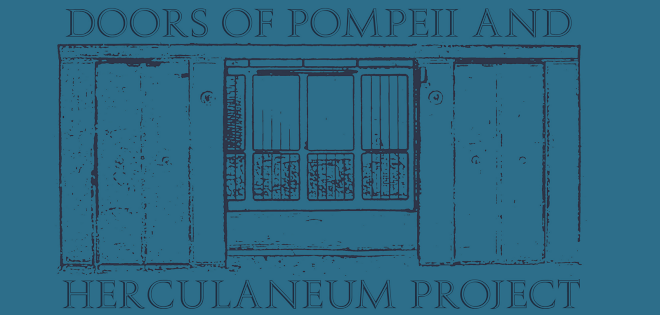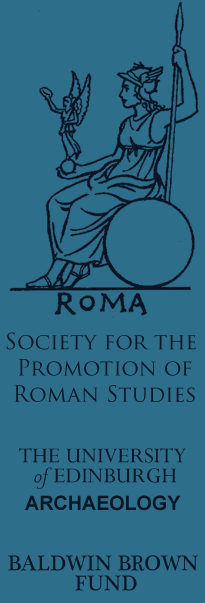Next semester, I will be teaching a course entitled Classical Urbanism: The Archaeology of the Ancient City through Open Studies at the University of Edinburgh. Classes will be held in the Basil Skinner Room, 15 Buccleuch Place on Tuesdays, 2:00-4:00 from January 18th, 2011. Full course details can be found here.
13 December 2010
16 August 2010
Fieldwork Complete
The 2010 field season drew to a close at the beginning of August, with the members of the project team returning to their native lands (generally without incident). Given the financial constraints under which we were operating, the project must be judged to have been a complete success. In 17 days, 28 houses and over 550 doorways were surveyed, new friends were made (ciao zio Vincenzo!), and many a strange field song was penned. Again, thanks to the team, who, though sunburned and full of tomatoes/cheese/bread/tuna, were always in good spirits and worked tirelessly to complete the project on time. I could not have hoped for a better group of students.Though fieldwork is now complete, the Doors of Pompeii and Herculaneum Project blog will continue to be updated as data analysis progresses. I intend to give papers summarizing the results of this season's work both in the United States and UK over the coming months; the details of these talks will be posted here as they become available. Stay tuned!
29 July 2010
We don't need no stinkin' badges.
Actually, that's not exactly true. We did need stinkin' badges, so we purchased some, and now there are extras (see image below). If, dear reader, you are interested in picking up a Doors of Pompeii and Herculaneum Project badge (or pin, as we call them in good ole' U.S. of A.), please send me an email and I will dispatch one (or indeed two or three) to you free of charge, while supplies last.
26 July 2010
Field Update
 |
| Jim entertains the tourists |
Halfway through the 2010 field season, the Doors of Pompeii and Herculaneum Project is progressing on schedule. To date, the team has analyzed over 300 doorways in a wide variety of domestic settings, establishing a corpus of data that will, no doubt, take the director a great many weeks to sort through (though he is looking forward to the task with much enthusiasm). We will be moving to Herculaneum later this week to continue survey in a further six houses, with fieldwork concluding in the middle of next week. Many thanks to everyone who has made the project a success so far, including the Soprintendenza and Direzione at Pompeii, the staff at Camping Zeus, and, of course, the DPHP team itself - Catherine, Katie, Janet, and Jim.
14 June 2010
Project Dates Finalized
The Doors of Pompeii and Herculaneum Project team will be in Campania from July 17th-August 3rd, 2010; specific dates at each site will be determined shortly. We look forward to meeting the other teams in the field this summer.
4 March 2010
Postgraduate seminar date change
Due to a conflict with the Munro lecture series, the date of next week's postgraduate seminar has been moved to Friday, March 12th at 5 PM.
5 February 2010
Application deadline moved forward
As a result of the number of applications received in the last week, the application deadline for the project has been moved forward to March 12, 2010.
29 January 2010
Talk: Archaeology Postgraduate Seminar Series, University of Edinburgh
As part of the Department of Archaeology postgraduate seminar series, I will be presenting the preliminary results of the Doors of Pompeii and Herculaneum Project and previewing the work scheduled to take place this summer.The talk is scheduled for March 11th at 5 PM in room F1, Old High School. All prospective applicants to the project are welcome to attend.
20 January 2010
Paper: Boundaries and Space in the Campanian House
I will be giving a paper entitled Boundaries and Space in the Campanian House on Saturday, April 10th, 2010 at the City University of New York Graduate Student Conference, Living on the Edge: Perceptions of Liminality in Classical Antiquity. A full conference schedule can be found here.
18 January 2010
Paper: Back in the Frame: Doors in Domestic Space at Pompeii and Herculaneum
I will be presenting a paper entitled Back in the Frame: Doors in Domestic Space at Pompeii and Herculaneum on Saturday, March 27th at the 2010 Roman Archaeology Conference, University of Oxford. This paper will discuss the results of the introductory component of the DOPAH project, a pilot study examining the doorways in the Casa degli Amorini Dorati (VI.16.7), Casa dell’Ara Massima (VI.16.15), Casa del Principe di Napoli (VI.15.8), and Casa di Nettuno e Amfitrite (V.7). A full schedule of the conference is available here.
14 January 2010
Call for volunteers, 2010 field season
The Doors of Pompeii and Herculaneum Project is seeking volunteers for the 2010 field season. The project will last for three weeks, from July 15th-August 3rd, 2010. Volunteers will receive hands-on training in the spatial analytical techniques required for data collection, and instruction on the fundamentals of Roman domestic architecture, with a particular focus on construction methodologies and house layout. The project will also include tours of the Forum, Colosseum, and Palatine Hill in Rome, a day trip to Ostia, and visits to other archaeological sites and museums around the Bay of Naples. Students with an interest in art history, archaeology, classics, or a related field are welcome to apply.
The DOPAHP team will be staying at Camping Zeus (located just outside the Marine Gate at Pompeii) for the majority of the project. The campground has hot showers, laundry facilities, and internet access; shops, restaurants, and a supermarket are a short walk away. Team members will be required to purchase a tent and will be expected to cover their personal expenses, including food, while in Italy. All travel and lodging expenses (including flights from and returning to Edinburgh) will be covered by DOPAHP. As a portion of the project’s costs will be shared by all members of the team, however, a £250 registration fee is also required.
To apply, download an application form. Please email completed forms to doorsofpompeiiandherculaneum@gmail.com byMarch 26, 2010. Now March 12, 2010.
The DOPAHP team will be staying at Camping Zeus (located just outside the Marine Gate at Pompeii) for the majority of the project. The campground has hot showers, laundry facilities, and internet access; shops, restaurants, and a supermarket are a short walk away. Team members will be required to purchase a tent and will be expected to cover their personal expenses, including food, while in Italy. All travel and lodging expenses (including flights from and returning to Edinburgh) will be covered by DOPAHP. As a portion of the project’s costs will be shared by all members of the team, however, a £250 registration fee is also required.
To apply, download an application form. Please email completed forms to doorsofpompeiiandherculaneum@gmail.com by
An introduction to the project
 Over the past three decades, the houses of Pompeii and Herculaneum have frequently been the subject of spatial analytical study. In most cases, an examination of the extant architecture – walls, floors, and other fixed elements – has been the primary method of research. In recent years, however, the study of non-fixed elements, including artefact assemblages and furniture, has led to a reassessment of many widely held theories concerning the use of space within the domus. The Doors of Pompeii and Herculaneum Project seeks to continue this trend by conducting an examination of the doorways in 52 Campanian houses in an effort to reconstruct the size, design, and locking capabilities of internal doors and partitions.
Over the past three decades, the houses of Pompeii and Herculaneum have frequently been the subject of spatial analytical study. In most cases, an examination of the extant architecture – walls, floors, and other fixed elements – has been the primary method of research. In recent years, however, the study of non-fixed elements, including artefact assemblages and furniture, has led to a reassessment of many widely held theories concerning the use of space within the domus. The Doors of Pompeii and Herculaneum Project seeks to continue this trend by conducting an examination of the doorways in 52 Campanian houses in an effort to reconstruct the size, design, and locking capabilities of internal doors and partitions. It has been commonly argued by architects, urban geographers, and archaeologists alike that the identification of boundaries is critical to spatial analyses conducted in domestic contexts. At Pompeii and Herculaneum, this is no less the case. Yet inquiries into the spatial arrangement of houses in these cities have consistently failed to consider the presence of doors, screens, and other physical and visual barriers in the home.
A four-house pilot project was completed in October 2009, resulting in the establishment of an initial database containing the records of 67 doorways. Though some important conclusions have been drawn from this preliminary study, far more data is required to establish reliable typologies for threshold and doorjamb construction, and to better understand the effect that doors had on traffic patterns, viewsheds, and spatial controls within the private home. As a result, a team from the University of Edinburgh will continue the survey in the summer of 2010, conducting architectural analysis on a further 48 houses at Pompeii and Herculaneum.
Subscribe to:
Posts (Atom)






